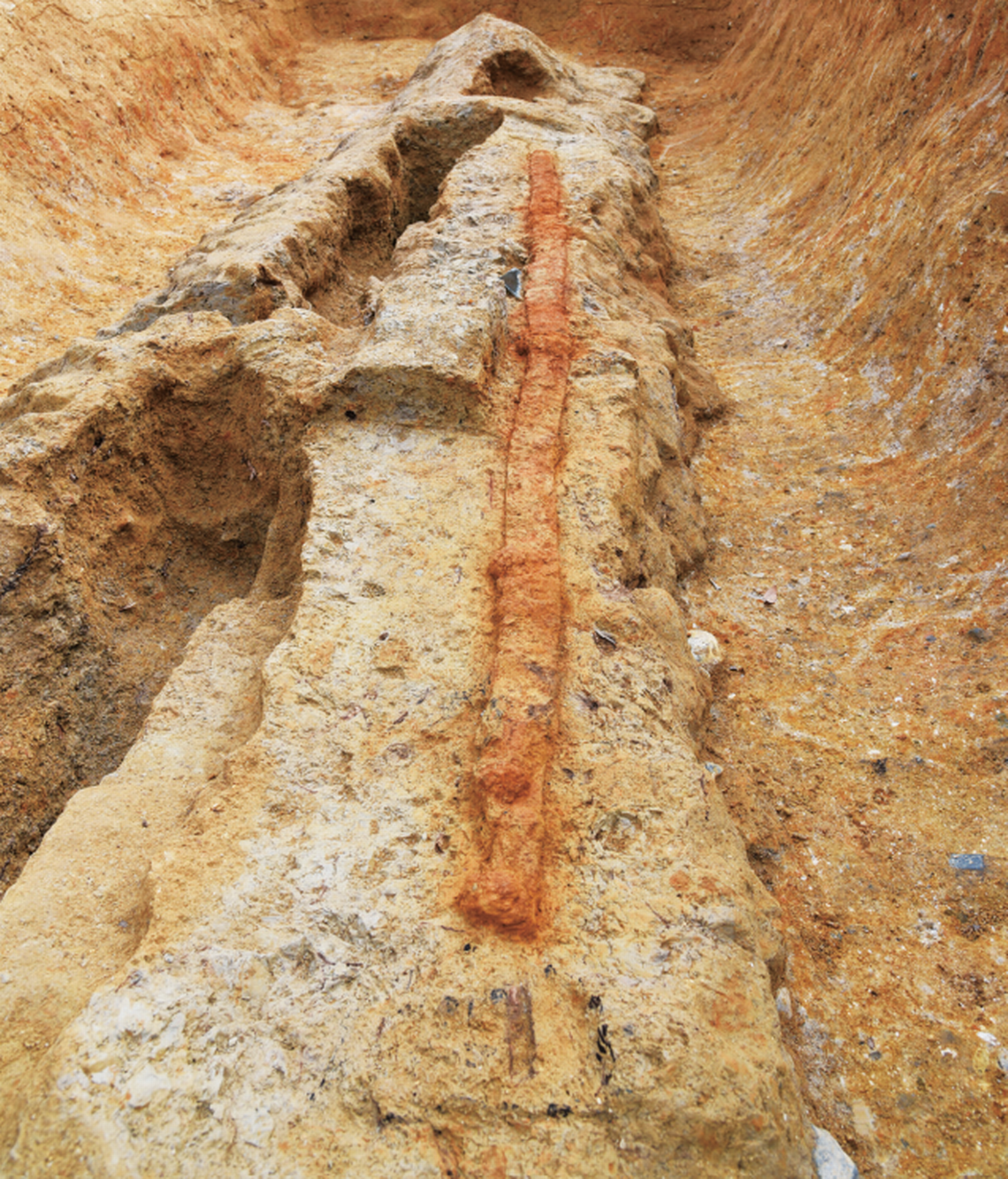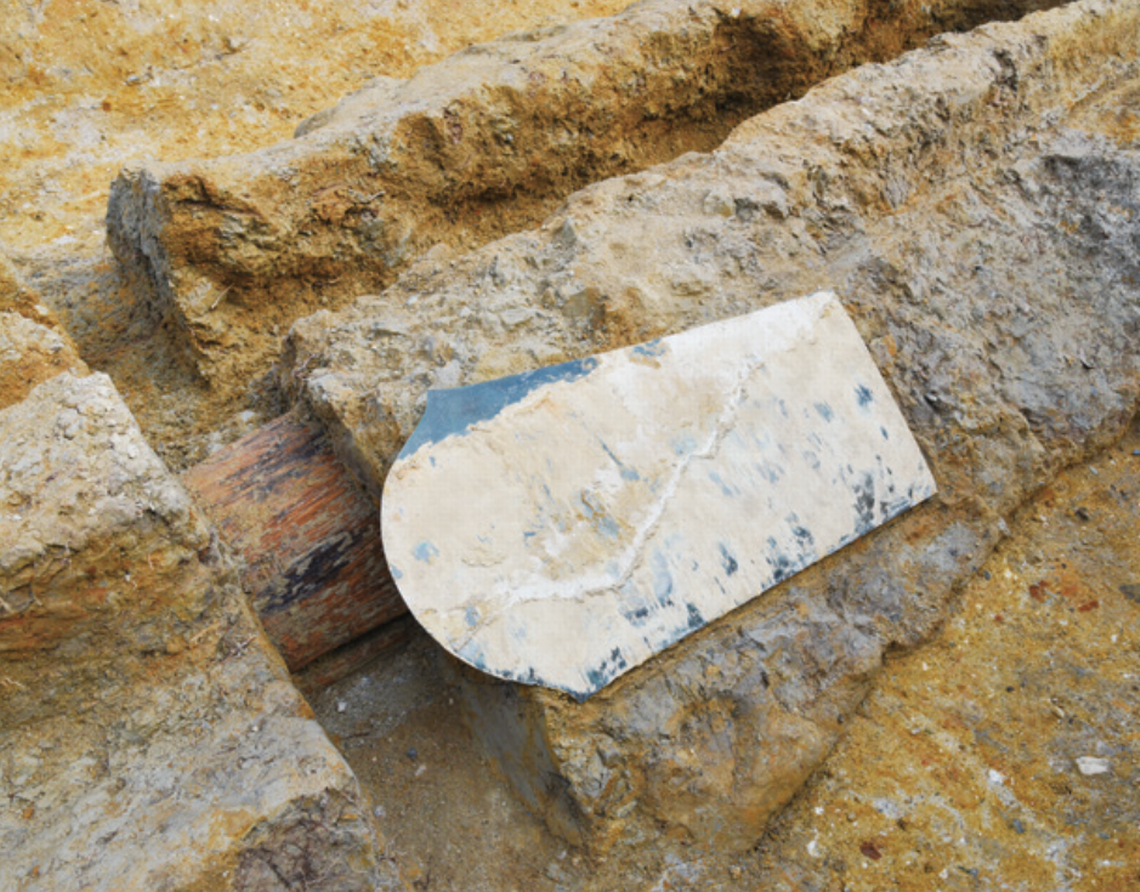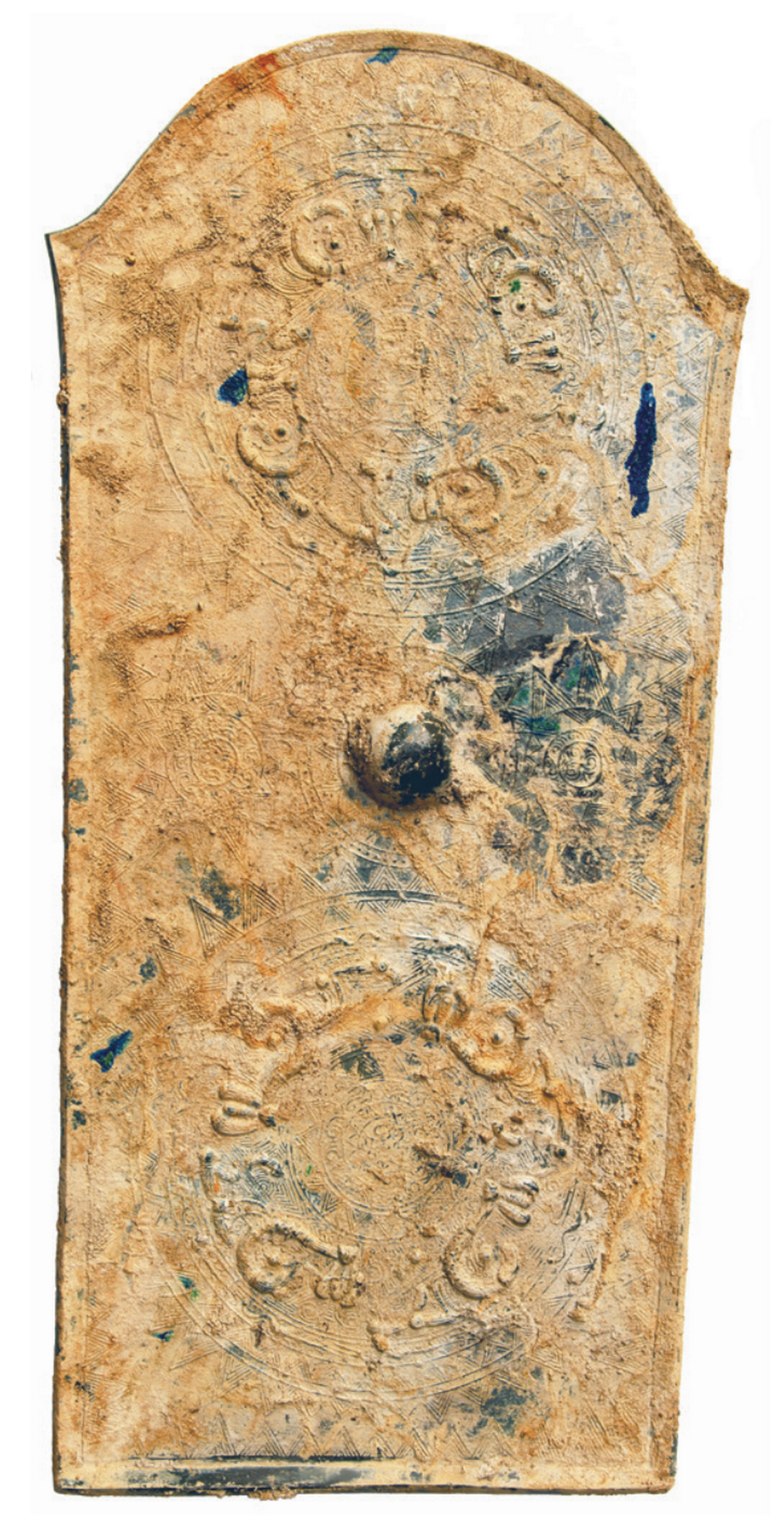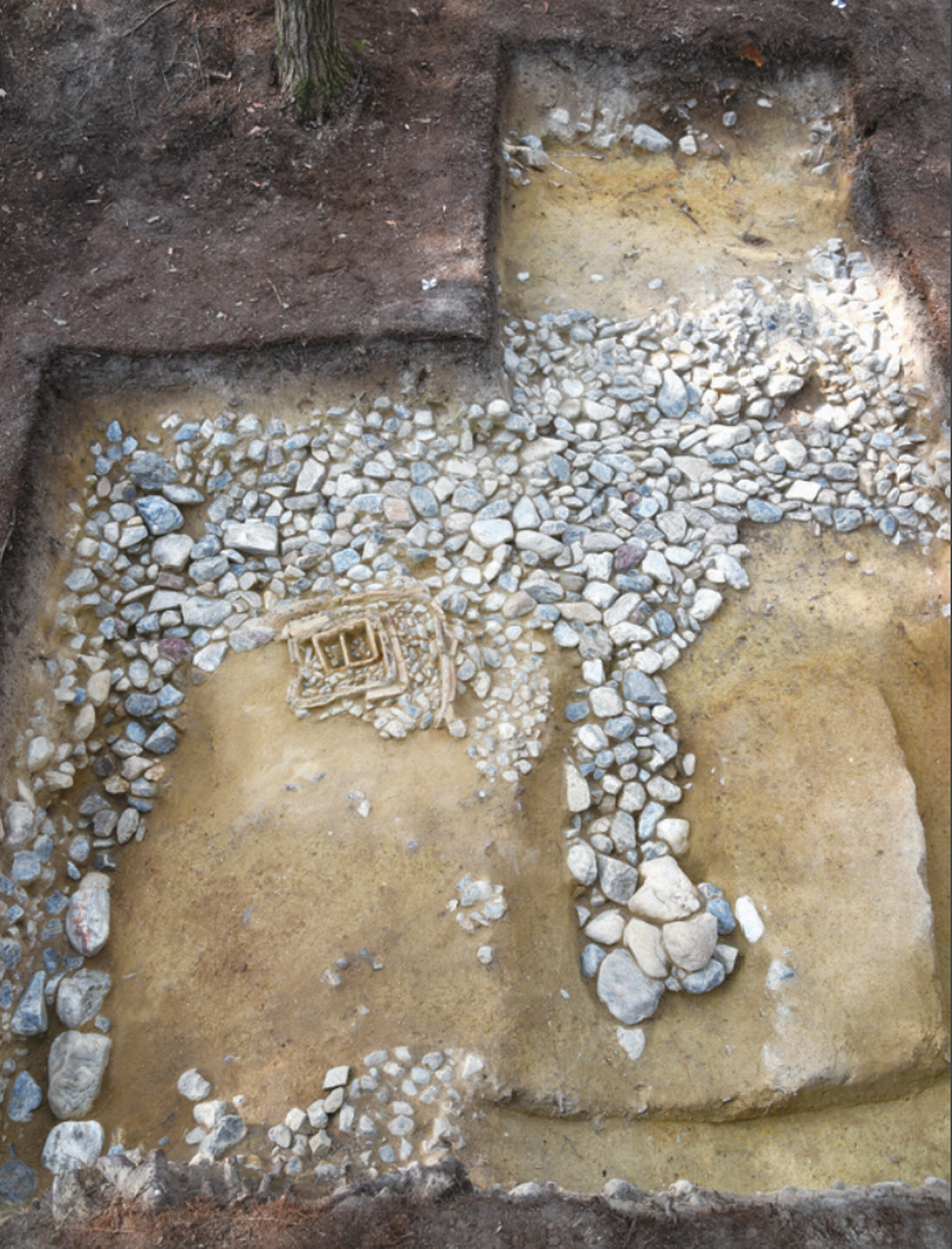Iron sword, almost 9 feet long, unearthed at 1,700-year-old burial mound in Japan

Buried under the clay soil, two metal shapes accompanied a wooden coffin: one long and skinny, colored orange with rust, the other short and blunt, tinged whitish-tan with age.
Archaeologists in Nara City, Japan, were excavating a 1,700-year-old burial mound, according to a news release from Nara City Hall on Wednesday, Jan. 25. The site, known as the Tomio Maruyama burial mound, is the largest circular burial mound, measuring almost 360 feet across.
The structure is asymmetrical, partially collapsed on one side, and composed of three tiers, officials said. While excavating an upper portion of the mound, archaeologists found a grave pit dug into the mound from the side, a seemingly unplanned addition to the mound.

Inside the tomb, researchers found a wooden coffin made of a Japanese pine tree, according to the release. Nestled alongside, they uncovered a shield-shaped copper mirror.
About 2.5 feet long, the mirror had intricate carved patterns and a knob in the center. Photos shared by the Nara City Board of Education Cultural Property Division on Jan. 27 show the artifact.
Nearby, archaeologists unearthed another metallic object: an iron sword. The sword was almost 9 feet long and had a meandering blade, officials said. Meandering blades are not entirely straight but designed to be slightly wavelike, photos from education officials show.

The weapon is the longest iron sword and the oldest meandering sword ever found in Japan, city officials said.
Excavations also uncovered numerous cups and a portion of the mound believed to be used as a ritual space, researchers said in the release. The remains of clay drain structures indicated the ritual space might have been fed by a spring.
Two other tombs were identified at the mound. One tomb had a stone chamber dating back to the sixth century. The age of the other tomb remains unknown.

The most recent excavations of the Tomio Maruyama burial mound began in October and are ongoing, city officials said in the release.
Nara City is about 300 miles southwest of Tokyo and about 20 miles east of Osaka.
Google Translate was used to translate the news release from Nara City Hall and Nara City Board of Education Cultural Property Division.
60,000-year-old knives give insight into how early humans in Israel butchered animals
1.2 million-year-old ‘stone-tool workshop’ uncovered in Ethiopia is oldest ever found
Searchers with metal detectors stumble on 2,500-year-old sacrificial site in Poland
